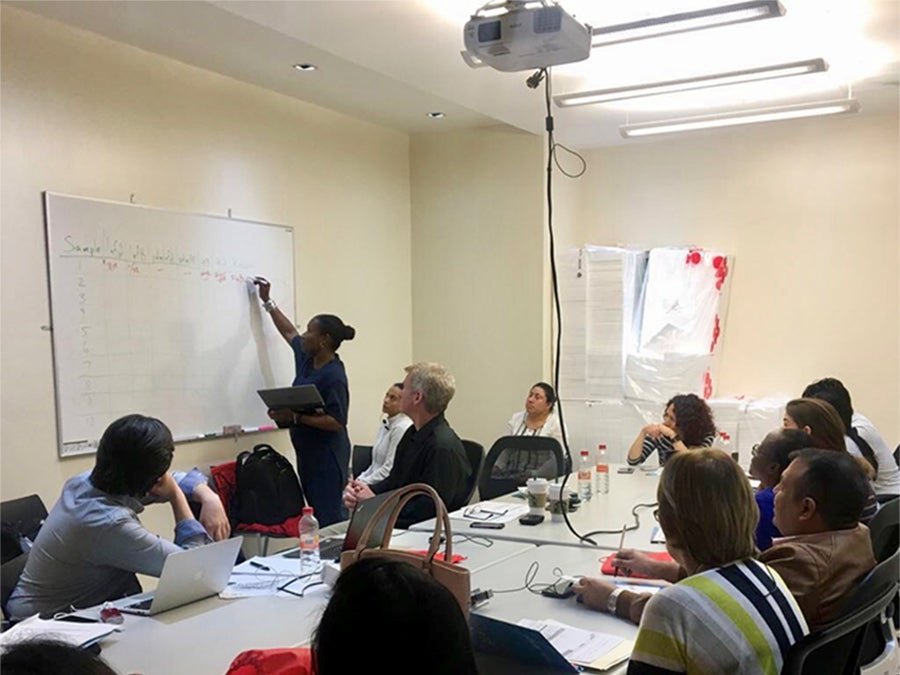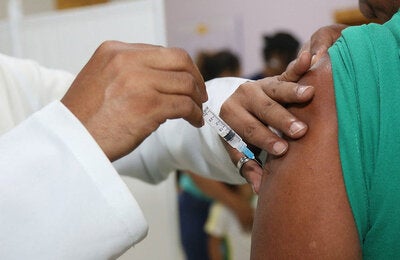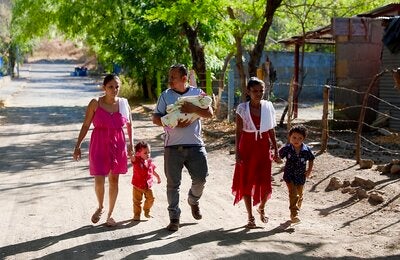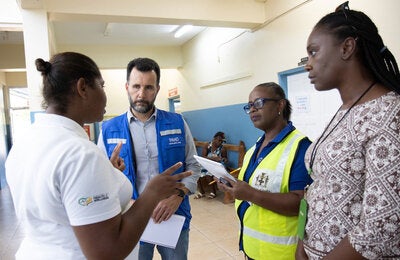Mexico City, 10 August 2018-Laboratory specialists from eleven countries across Latin America and the Caribbean have received training from the US Centers for Disease Control (CDC) and the Pan American Health Organization (PAHO) in a bid to improve the detection of influenza viruses circulating in the region.

(Participants of the course, which was organized by the CDC and PAHO/WHO, prepare to test for influenza viruses using PCR at the molecular biology area of the InDRE Influenza Laboratory in Mexico.)
The international course on molecular diagnostics of influenza is part of "a joint effort to better prepare ourselves to deal with the flu," said José Narro Robles, Secretary of Health of Mexico during the inauguration ceremony for the training, which took place in Mexico City from August 6 to 10, in partnership with Mexico's Institute of Epidemiological Diagnosis and Reference (InDRE).
Course participants include those from National Influenza Centers (NICs) and national laboratories in Belize, Colombia, Cuba, Ecuador, El Salvador, Jamaica, Nicaragua, Paraguay, Peru, Venezuela and Mexico, which also form part of the regional network of influenza laboratories and the WHO Global Influenza Surveillance and Response System (GISRS).
The influenza virus causes outbreaks and infections all over the world. During the influenza "season" up to 15% of the population can be affected, leading to up to 500,000 deaths each year. As well as this, the emergence of a new strain of influenza virus has the potential to generate pandemics, leading to both sickness and death.
"This course not only allows us to increase the response capacity of laboratories in the region, but it also enables us to strengthen surveillance processes and the molecular detection of new strains of influenza virus as soon as possible," said Jairo Mendez, Regional Advisor on Viral Diseases at PAHO.
According to Mendez, these actions are not only key to defining patterns of circulation and evolution, but also generate the data necessary to decide the composition of annual influenza vaccines.
Annual vaccination is the primary, and most effective, way to prevent influenza. By their very nature, influenza viruses are constantly subject to genetic and antigenic variations. This means that the composition of influenza vaccines must be reviewed and adjusted each year to make sure that they correspond to the antigenic characteristics of the current virus in circulation.
The NICs and national laboratories in the region are responsible for collecting and receiving samples obtained from patients affected by flu. Preliminary analysis is then carried out and isolated samples or viruses are then selected and sent to the WHO Collaborating Center for Influenza (CDC-Atlanta). There, they are characterized more accurately, and information provided to WHO about the viruses circulating in the region.
As a result, good surveillance on the part of laboratories in the region is vital, not only for the early detection and alert of influenza viruses with pandemic potential, but to also respond quickly and protect the world from the threat of influenza.
Links
-Influenza and other respiratory viruses
-Global Influenza Surveillance and Response System (GISRS)



